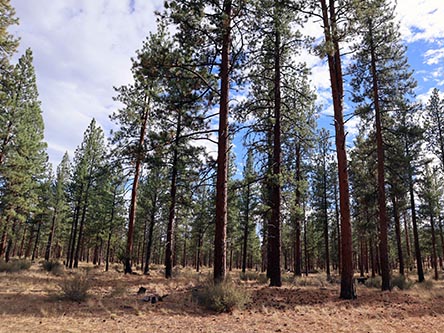 State forests provide many benefits for Oregonians including clean water, recreation, fish and wildlife habitat, and carbon sequestration, all while supporting local economies through the sustainable harvest of timber.
State forests provide many benefits for Oregonians including clean water, recreation, fish and wildlife habitat, and carbon sequestration, all while supporting local economies through the sustainable harvest of timber.
The Department of State Lands (DSL) works with approximately 13 percent (124,000 acres) of the State’s nearly one million acres of forestland.
The majority of these forestlands are located in western Oregon. DSL prioritizes management of these lands to benefit the people of the state and to
generate revenue for Oregon public schools. There is an additional forestland of about 83,000 acres known as the
Elliott State Research Forest, which has a unique mission and management structure.
Most DSL forests are open for public use. However, some activities may
require an authorization from the Department, and some parcels may have use restrictions. Follow the link below to learn about hunting, fishing, firewood cutting, gathering forest products, and other recreational activities.
Forestlands are either managed by Oregon Department of Forestry (ODF) on behalf of DSL or managed directly by DSL.
ODF is currently working through the final stages of the
Western Oregon State Forests Habitat Conservation Plan, which will enable ODF to comply with the federal Endangered Species Act, while managing state forests for economic, environmental and social benefits. The plan will cover all of ODF’s and DSL’s forestlands west of the Cascade Range, excluding the Elliott State Forest.
About 13,000 acres of DSL forests are DSL-managed. These forestlands consist of many scattered parcels lying primarily east of the Cascades.
DSL-managed forests are typically on slow-growing sites, and marginally capable of producing income from timber harvest. These forestlands are managed directly by DSL staff in the Real Property Program with the goal of maintaining forest health and reducing the risk of wildfire.